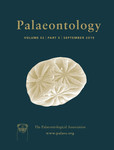Reg. Charity No. 1168330

During the Mesozoic, Crocodylomorpha had a much higher taxonomic and morphological diversity than today. Members of one particularly successful clade, Thalattosuchia, are well‐known for being longirostrine: having long, slender snouts. It has generally been assumed that Thalattosuchia owed their success in part to the evolution of longirostry, leading to a feeding ecology similar to that of the living Indian gharial, Gavialis. Here, we compare form and function of the skulls of the thalattosuchian Pelagosaurus and Gavialis using digital reconstructions of the skull musculoskeletal anatomy and finite element models to show that they had different jaw muscle arrangements and biomechanical behaviour. Additionally, the relevance of feeding‐related mandibular traits linked to longirostry in the radiation of crocodylomorph clades was investigated by conducting an evolutionary rates analysis under the variable rates model. We find that, even though Pelagosaurus and Gavialis share similar patterns of stress distribution in their skulls, the former had lower mechanical resistance. This suggests that compared to Gavialis, Pelagosaurus was unable to process large, mechanically less tractable prey, instead operating as a specialized piscivore that fed on softer and smaller prey. Secondly, innovation of feeding strategies was achieved by rate acceleration of functional characters of the mandible, a key mechanism for the diversification of certain clades like thalattosuchians and eusuchians. Different rates of functional evolution suggest divergent diversification dynamics between teleosaurids and metriorhynchids in the Jurassic.
AcknowledgementsWe thank ‘la Caixa’ Foundation for awarding AB a scholarship to fund his MSc studies and research project. AB is currently supported by a NERC GW4+ Doctoral Training Partnership studentship from the Natural Environment Research Council [NE/L002434/1]; BCM is funded by Leverhulme Trust Research Project Grant RPG‐2015‐126 to MJB. We thank Roger Benson, Phil Cox and an anonymous referee for their helpful comments that improved the quality of the manuscript. We acknowledge Matt Williams and Susannah Maidment for making access to the BRLSI and NHMUK fossil collections possible. We are thankful to John Cunningham and Tom Davies at University of Bristol for their help with imaging software. We also thank Tom Stubbs for his help with R coding, and Jen Bright and Stephan Lautenschlager for their comments and suggestions on the FEA. This paper represents work submitted by AB as part of the requirements of the MSc in Palaeobiology at the University of Bristol.